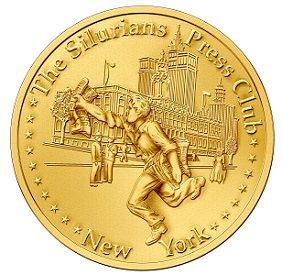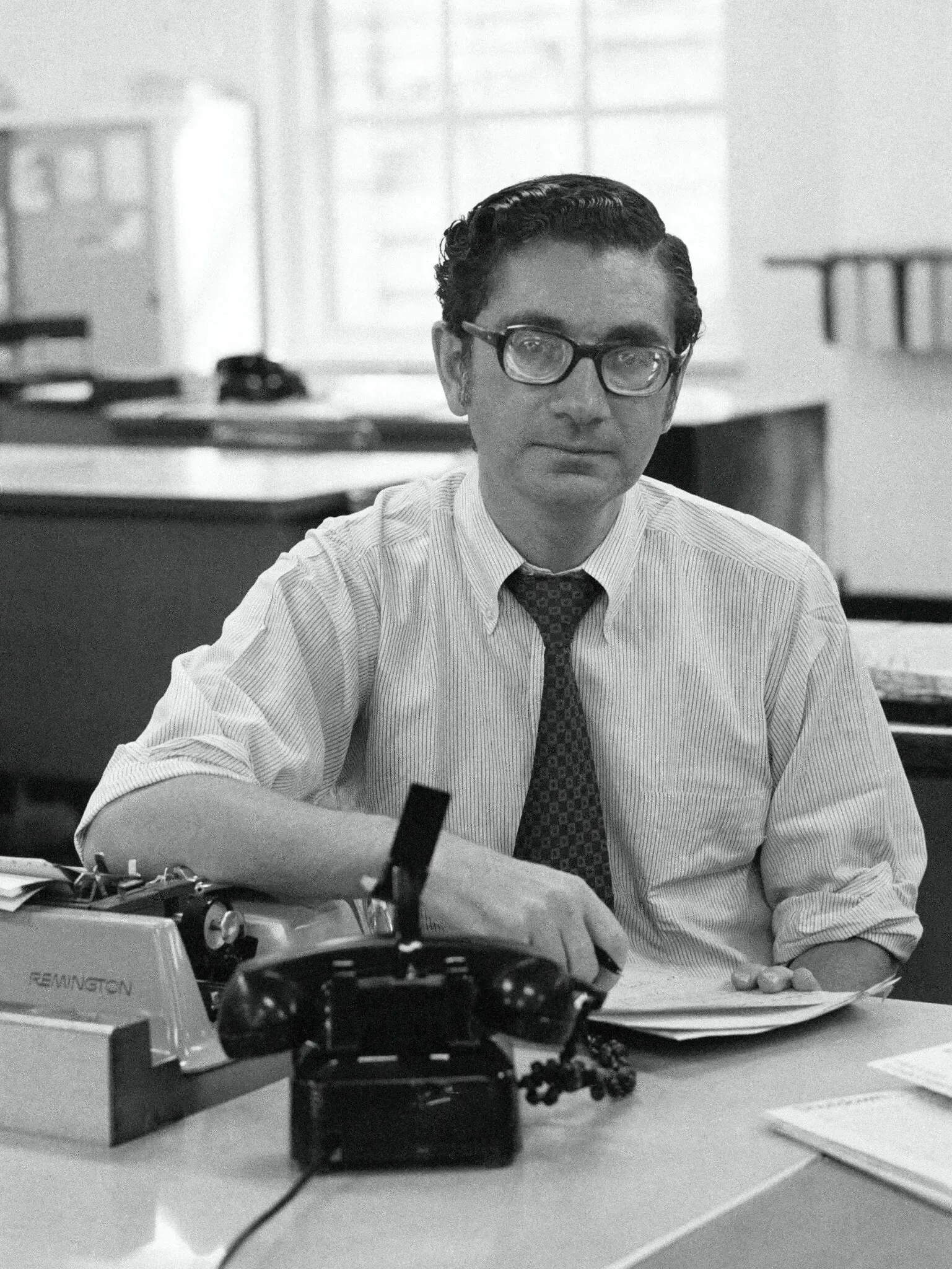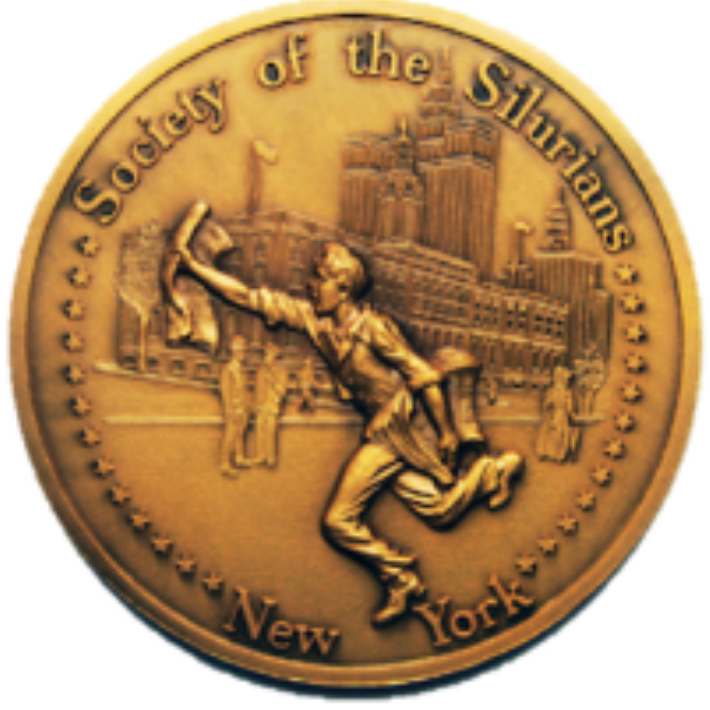Blog
Top Editor, True-Blue Silurian, July 5, 1933-June 1, 2025
The Pulitzer Prize-winning correspondent and former Executive Editor was the public ideal of a New York Times man: polished, erudite and well spoken.
Author, Actor, Politician, All with Irish Flair, 92
Village Voice Co-Founder, Publisher, Soldier, Psychologist, 100
Iconoclastic Reviewer of Our Most Popular Medium
Stephen M. Silverman, age 71, reporter and historian of popular culture, died on July 6, 2023. The New York Post’s chief entertainment correspondent for years and a founding editor of people.com, he has contributed to publications across the United States and abroad, and taught journalism at Columbia University. Among his more than a dozen books are “David Lean,” “The Catskills: Its History and How It Changed America” and “The Amusement Park: 900 Years of Thrills and Spills, and the Dreamers and Schemers Who Built Them.” There will be a celebration of his life this fall after the publication of his last work, “Sondheim: His Life, His Shows, His Legacy.” He is survived by a niece, Sarah Silverman, and many devoted friends. Memorial gifts in Stephen’s name can be sent to PEN America (pen.org). Published by New York Times on Jul. 9, 2023.
Restaurant Critic Extraordinaire
Grace O’Connor, a Silurian since 1997, an award-winning reporter and editor for the Albany Times Union for 22 years, and one of the first women installed in the Hall of Honor of the Women’s Press Club of New York State, died October 29, 2022 at Branford Hills Health Care Center in Connecticut. Paul Grondahl, a former colleague at the Albany Times Union, was moved to write an appreciation, excerpted here in part: “She was old enough to be my mother and she kept a Holy Bible atop her beige metal desk, next to an IBM Selectric typewriter and rotary telephone. Grace O’Connor did not drink or curse, which, along with the Bible, made her an outlier in the rough-and-tumble bygone era of newspapering. She was on a first-name basis with half of Albany. There was only one Grace. “She was beloved by her readers and coworkers alike,” said Barb Zanella, who began as an editorial clerk at the Times Union in 1973 and worked for Grace, whom she considered a mentor and later a dear friend. A former Baptist Sunday schoolteacher, Grace brought out the better angels of the hard-drinking, cynical 20-something reporters who worked alongside her…. “There was nothing phony about Grace. She was aptly named,” said Fred LeBrun, who arrived at the Knickerbocker News in 1967, moved to the Times Union in 1970 and worked as reporter, editor, restaurant critic and columnist and who still contributes a monthly column. Grace became a kind of den mother to an unruly crew of scribes who helped pound out the first draft of history. She regularly quoted Scripture in her feature stories, which graced the Times Union from 1969 to 1991. She got her start writing for the paper’s five weekly neighborhood supplements, known as the Suns, and later served as the Suns’ editor before becoming a general assignment reporter for the main broadsheet….” For more: https://www.timesunion.com/news/article/Grondahl-Remembering-a-newsroom-full-of-Grace-17567547.php Born in Long Branch, NJ on September 13, 1927, O’Connor graduated from Manasquan High School in 1945, and attended Monmouth Junior College in Long Branch and Rutgers South Jersey in Camden, NJ. While a teacher and director of Bethesda Lutheran Nursery School in New Haven, she was published regularly in magazines, including “Ingenue,” “Teen,” and religious publications. As a community leader, she was President of the East Camden (NJ) Junior Women’s Club and a member of the state board of the New Jersey Federation of Jr. Women’s Clubs in the 1950’s, a member of the Branford, Connecticut Women’s Club in the 1960’s, and served on the board of the Community Dining Room in Branford. O’Connor is survived by her daughter Patricia and her son-in-law Carmen Cavallaro, grandsons and beloved great grandchildren who called her “Grandma Grace.” A celebration of her life and memorial service will be held at the First Baptist Church, 975 Main Street, Branford Connecticut on November 12 at 11:00.
A swell fellow, a proud Silurian, that all-round nice guy, Jim Lynn , left us on Aug. 10 due to complications from Covid. He was 88 and a retired editorial page writer at Newsday, where he had worked for 30 years. Jim, a Princeton University graduate, went to Newsday in 1972 after stints at The Long Island Star-Journal, Newsweek, New York Herald Tribune, WABC-TV and WMCA radio. He was the Trib’s Albany bureau chief in 1966, on vacation in Europe when he got word that the paper had shut down. His former colleagues at Newsday had nothing but awed references to Jim’s intelligence and wit. James Klurfeld, editorial page editor for Newsday from 1987 to 2007, remembered his friend and colleague as someone who represented old-fashioned virtues. “He was a terrific editor, a very careful fine, fine editor who always improved your writing,” Klurfeld said. “He improved my writing. I won an award for best editorials one year and I owe it all to Jim who I often showed my material to before I published it.” Carol Richards, editorial page deputy editor from 1987 to 2006, said that during those years the editorial board was strong with smart, passionate people whose political leanings covered a wide range of beliefs. Lynn was the person to count on to be informed on liberal politics. “When we were having a debate about some issue, almost always political or governmental, Jim had opinions that people would listen to,” she said. “He wasn’t a knee jerk liberal; he was a well-informed liberal.” “He always said he felt so lucky to have had the opportunities that he had,” his daughter, Nina Lynn said. “He also felt a great responsibility to use what he had been given, well and honorably.” James Dougal Lynn was born in Houlton, Maine, and graduated from high school in Mount Lebanon, Pa., where a teacher recommended that he apply to Princeton. His experience there set him on a life-changing course, his daughter Nora Curry said, which included his first introduction to bagels. “His world opened up in so many ways. He made lifelong friends, he got to be with other people who loved reading and writing and thinking the way that he did, he’d not had that before.” Dora Potter, Newsday alum, fellow Silurian and his devoted partner of 30 years, said Jim was “thoughtful of everyone.” Besides obvious acts of community service such as after he retired volunteering as a dispatcher for the local fire department, he would do unexpected, ordinary things that would never occur to others. He packed up his extensive collection of Playbills and took the train in from Long Island to give them to an Aids center for actors. He lugged interesting beer cans he’d picked up all over Europe to the delight of a friend back home who had a collection. “He never stopped thinking of others,” Potter said. “He was a steward for us all, he took care of us.” His daughters agreed, saying their father gave them a set of values to live a life with empathy and public service. He made one final act of public service: he donated his body to science. “To my dad it was sensible,” Nora Curry said. “It’s like ‘someone can use this and learn from it.’” A memorial was scheduled for Nov. 6 at the Nassau County Museum of Arts in Roslyn, where Jim was a docent. Potter said it would be both in person and on Zoom. She said she particularly wanted that option so people can choose to be safe, since both she and Jim had suffered from Covid.—By Theasa Tuohy



